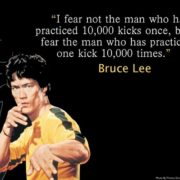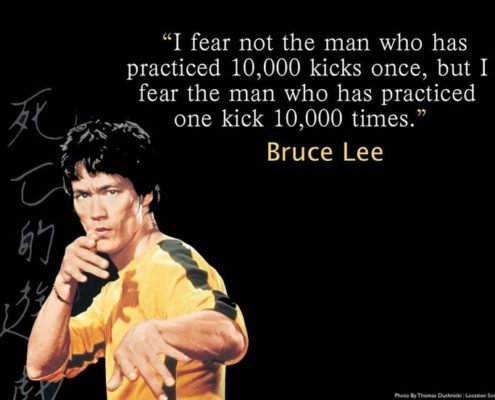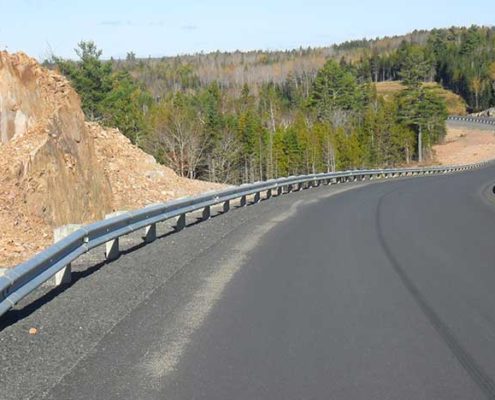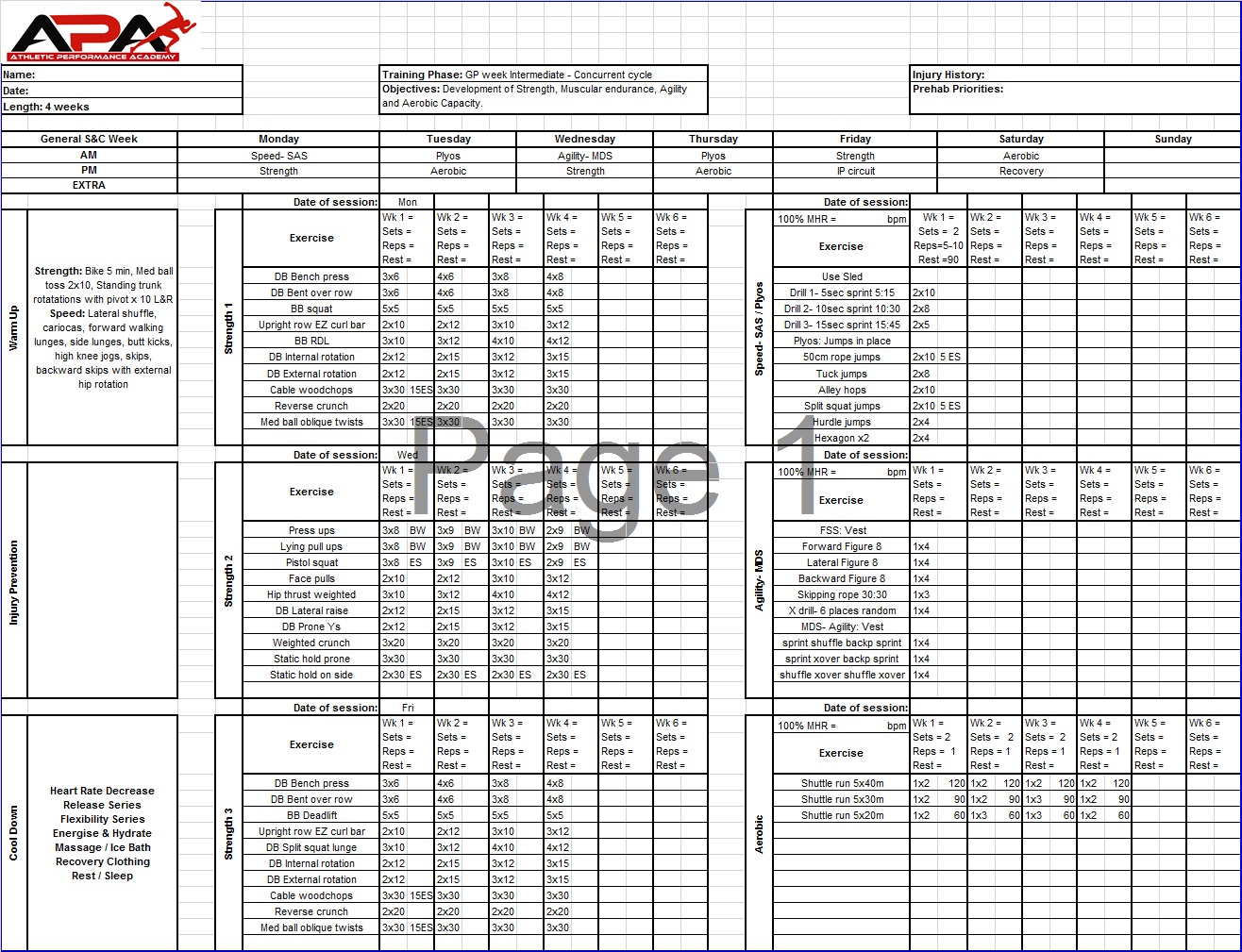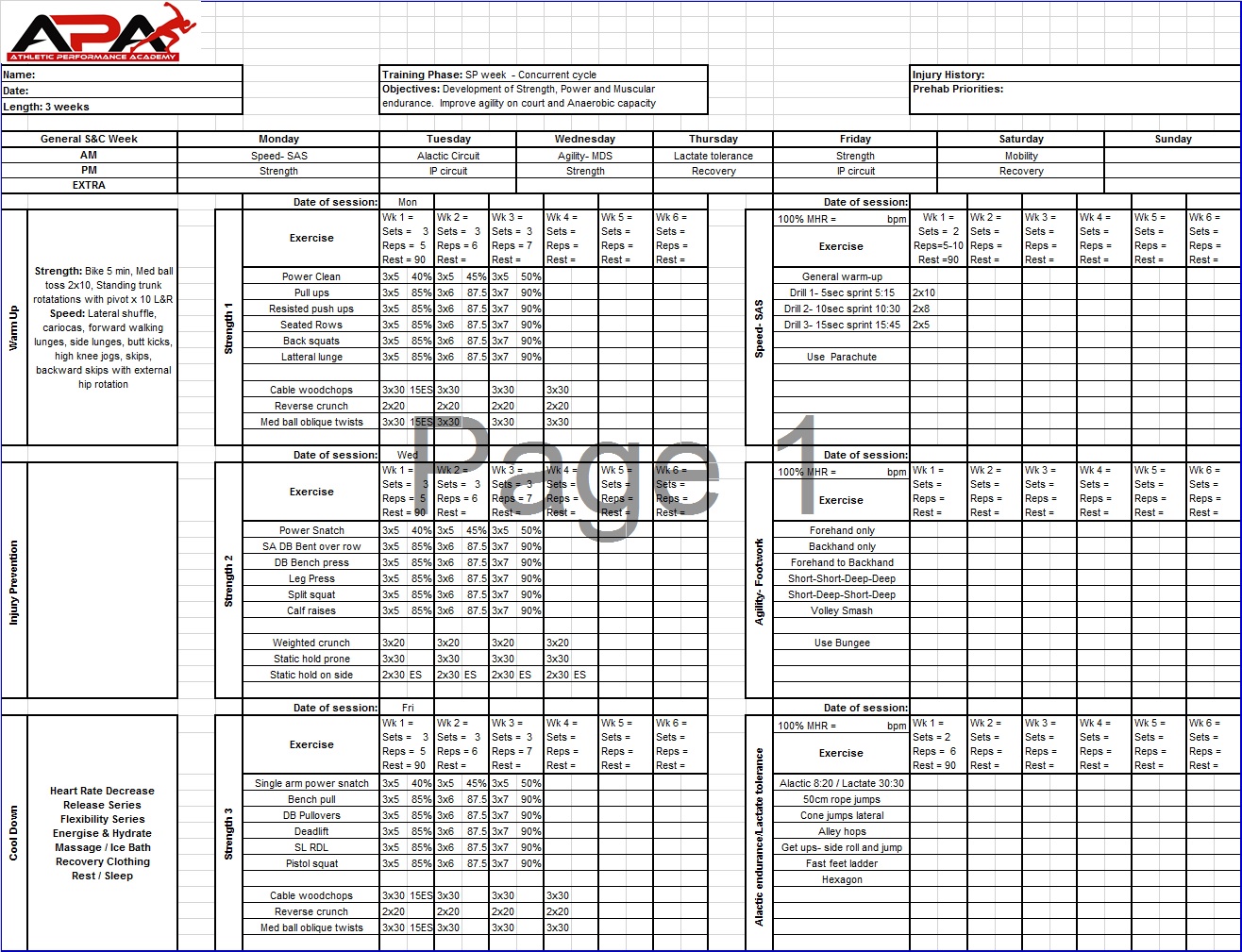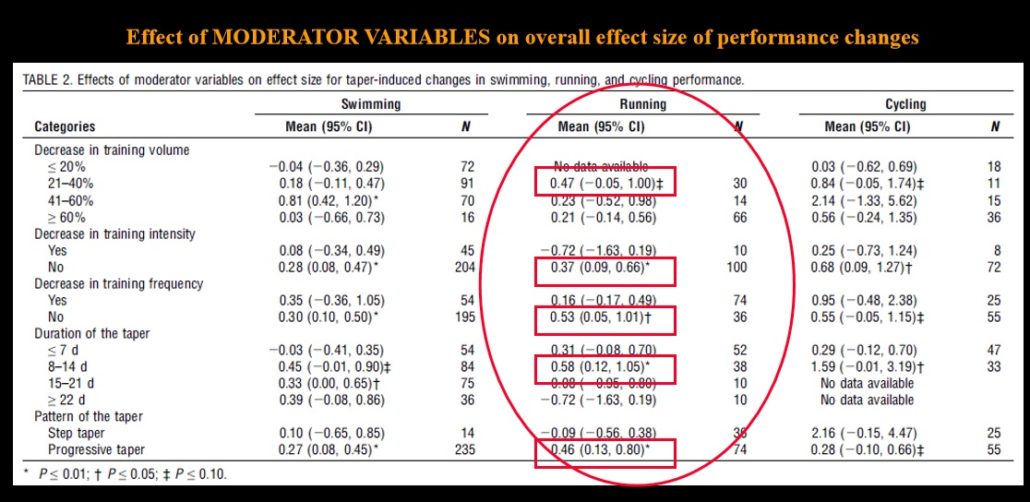Tapering for Tennis?
Hey Everyone!! I am a bit embarrassed to admit it has been over a month since I posted a blog, it feels like I’m in confession!! In truth, I made a deliberate effort to disconnect for a few weeks on holiday and then I wanted to take my time to digest and reflect on the information at the UKSCA Conference I attended almost three weeks ago on August 5th/6th. In this blog I will review the conference speakers that I enjoyed listening to the most and then talk about some of my ideas on how I am going to improve my S&C programmes.
I have to say I felt this was one of the best conferences in a while. There was a nice blend of Academic research review, evidence based practice and coaching practicals. I have attended almost every one from the beginning in 2005- and it is always nice to meet up with old friends and new ones.
I was particularly pleased for Chris Bishop being elected to the Board of Director’s who I have known for several years, as well as James Baker being awarded Youth S&C coach of the year- and it was great to meet many new acquaintances in person for the first time.
James Baker hosted a fantastic Child to Champion conference earlier in the year and I have enjoyed seeing the development of his Elite Performance Pathway at St. Peter’s R.C High School, Gloucester. In many ways his training system at High School mirrors the APA training system I use in Tennis for our mini-tennis, junior academy and Pro Team squads. His award was certainly well deserved and his work is mapping the way forward for other school based coaches.
Finally, I’d like to say how fun it was to meet some of the contributors to a Facebook page I am a member of ‘Youth Strength & Conditioning coaches’ and meet the likes of Rob Anderson, Nick Ward, Des Ryan, Simon Brundish, Howard Green, Andy Bruce and many more.
Highlights of the Conference
Jeremy sheppard, Des Ryan and Loren Landow were my personal favourite presenters. Here’s what I took away from some of their presentations.
Des Ryan- Arsenal FC Academy
I had the privilege to hear Des talk at the recent Child to Champion conference. How could I put it? At the end of the presentation both there and at the UKSCA conference I had a strong urge to want to work for him. He just came across as someone who understands both management and leadership. In his 3-4 years there he has:
- Created a Team culture where coaches want to work there and players want to train there
- Reduced injuries in his teams to below the league average
- Created infrastructure to facilitate more individualised world class programmes by investing in staff and facilities.
Overall it was clear that Des was someone who wanted to invest in his team of coaches. He reminded me of how valuable CPD is, done the right way, and I could see that he believed in his team and would support them in their decisions. His does this by exposing them to world class coaches and then trusted them to use these experiences to come up with the Arsenal way, provided that they can support their rational and don’t make too many mistakes.
Loren Landow- Landow Performance
Loren gave us an energetic insight into how he coaches movement. I was excited to hear him speak because a lot of his ideas spoke to my own philosophy. He also echoed some of the points that Jay Dawes made in his practical ‘breakout session’ on Reactive Agility. In the last few years I have questioned myself whether I have needed to do less technical coaching- use less coaching cues- use more chaos sooner etc but this restored my faith that first and foremost we need to learn the correct movement pattern.
- Loren put it out there that Tennis athletes are perhaps the best movers of all sports- certainly in the context of agility. No complaints from me!
- He believes (like Jay) in building a movement competency base- before adding fitness and sport skill on top. Sure everyone (player and coach) wants a ball involved, or an opponent but sometimes they don’t have the movement skills to support the sport skills.
- Drill the movement skill first before adding chaos. Bruce Lee quote
- We’re not talking about sports, we’re talking about laws of biomechanics: passive restraints (tendons/ligaments) are like the guard rails on a road. We know they are there but it is the DRIVER who keeps us safe on the road- we shouldn’t need to rely on the passive structures to keep us safe. We need to programme the neuromuscular system to perform movements akin to being able to drive with a degree of autonomy.
- Pronation is a good thing– it’s the body’s natural shock absorption. The best athletes decelerate flat foot footed (promoting dorsi flexion) but the amortisation phase is very brief. Too much eccentric pronation on the plant foot will create excessive torques!
- Whole-part-Whole coaching works best
- Technical model- Piston (acceleration) versus Acyclical (top speed)
- Programming- Linear day (high) versus Multi-directional (low) but if you want to emphasise high load eccentric work on the MD day then just do technique drills for the linear day to make that a low one.
Jeremy Sheppard- previously Surf Australia
- Look for patterns– think outside of the box to determine the most appropriate biomotor abilities and assessments that will give clues to what the best ‘surfers’ in the world can do physically. Is your athletic profile sensitive enough to detect differences in performance between the elite and the sub-elite? Put another way, are there tests you use that the best in the world consistently do better than the sub-elite? Jeremy said that he went with his gut instinct to help him make decisions about what to test. He would eliminate tests that didn’t reveal anything significant and keep the ones that he thought showed promise.
- Reverse engineer sports performance– Jeremy shared with us some of his findings from analysing the surfers in training and competition on the water. A ‘Needs Analysis’ is not a new concept but it was fascinating to learn more about surfing and see that for example, the best surfers consistently paddle at a higher speed.
What can we apply to Tennis?
So Jeremy got me thinking, what can I apply to my main sport of Tennis? I talk about this in the first half of my latest Daz Dee TV Episode 14.
I am forever disappointed by the lack of available research on Professional Tennis. I’m determined to uncover some physical parameters that discriminate between elite and sub-elite tennis players. Yes we know that there appears to be no correlation between those players who score highest on an athletic profile (fitness test) and their ranking- meaning that the best athletes don’t seem to be the highest ranked players.
But there is hope that we can start to look for lessons from the competitive matches with the introduction of GPS and mechanical load monitoring which is a welcome addition to the physiological loading that has been available in Tennis for some time.
GPS in Tennis?
Rather than going into lots of details I am just going to post the Journal article here so you can read it.
Do Running Activities of Adolescent and Adult Tennis Players Differ During Play
I am really encouraged by this article because I had always assumed that GPS technology is inadequate for a sport like Tennis, where the maximal changes in velocity and direction over short distances are misinterpreted as low to moderate intensities because the attained velocities are not high. I am going to try and find out more about what they did to overcome this but it seems they have cracked it!
This could be a break through in technology advancement that could enable practitioners to quantify the mechanical load more accurately and finally determine the physical demands of the sport.
Periodisation
I’ve written about Periodisation in several blogs before. I am always refining my ideas and currently I tend to adopt two or three variations of cycles. Even though tapering/deloading wasn’t mentioned in any of the UKSCA conference presentations this is where my reflections took me!
At APA we talk about a preparation period which will be defined by the athlete’s training age and athletic profile.
Advanced athlete:
In an ideal world a more advanced athlete would complete a cycle with a focus on ‘General’ work and then progress into a cycle which has more ‘Specific’ work focus. A general preparation cycle has more focus on strength. A specific preparation cycle has more focus on power. The more experience the athlete has the less time they spend on general work.
An optimal preparation phase would enable a build up to a peak over 12-15 weeks, this would include a taper period. In Tennis there will be usually only 3-5 weeks of progressive loading as part of a preparation cycle.
It is rare that I get more than 2-3 weeks of consistent training at base before it is interrupted by a tournament, so I usually have a week or so of more general work then go into several weeks of specific work which combines max strength, power and anaerobic conditioning. Some athletes I will use more ‘between session’ concurrent training- meaning I might do sessions with power and strength focus on different days. Others will do more ‘within session’ concurrent training where the strength and power is in the same session.
I am still trying to see if I can get certain players to lift while at a tournament but this is not always practical or desired.
As Alex Natera said, ”I am concurrently working on the qualities that are important for the sport until it’s time to balance fitness-fatigue.” so the goal is to simply prioritise what they need and get on with it for as long as you have them but leave enough time so they leave you without being too tired!
Less experienced athlete:
Basic strength should be the main priority right up to competition in a weak, young or less trained athlete. Not a massive need to periodize and plan multiple phases of differential qualities in the weaker/less trained athlete.
Alex Natera says: ‘My preference would be to stay away from high reps of 15’s, 12’s and 10’s. I would prefer to transition them quickly to 5’s or 6’s and doing multiple sets at those reps. I would look at the speed of the lift and use a passive loading scheme (extensive loading and repeat cycles) to dictate when I increased loads. The development of power in this type of athlete will be looked after in getting them progressively stronger however I would be introducing them to forms of explosive/ballistic lifting from a skill perspective.”
Beginner strength cycle
The figure above corresponds to the progression of loading for a primary strength exercise. These are the exercises that have the greatest capacity to be overloaded such as squats, deadlifts, presses, rows etc.
The best opportunity I have to use periodisation is with our 10-13 year old athletes on the full-time programme who train every day and usually only compete at the weekend and in school holidays. For these athletes I may initially use a linear periodisation cycle where every 4-6 weeks we increase the loading e.g., 3×15 => 4×10 => 5×5 for our strength exercises. In the initial stages of a young athlete’s career I feel justified in progressively loading them. In the deload week we will keep the same programme but reduce volume of sets from three to two or even one. If they can’t squat or deadlift etc at the beginning then they would be learning these lifts with less reps and load, and the 3×15 for the quadriceps for example, might be a leg extension machine, split squat, step up, lunges, even leg press or whatever they can do with good technique and we can load a bit.
Hopefully by the time they move up to 4×10 or 5×5 their technique on barbell exercises is good enough to load.
At the recent Child to Champion Conference Alex Natera said when speaking about novice lifters :’Even in early GPP I shoot through the higher reps ranges with each week and by week 4 or so I am already down to 5’s.’ I might do that in the second half of the year but in the beginning I feel more comfortable in doing at least 4 weeks at progressive loads.
Intermediate strength cycle
The primary strength exercise in the above example is progressively loaded over a 12 week period but the sets x reps is constant at around the 5×5 level. In the final week of each 4 week cycle there is a deload of volume while the athlete attempts to lift the heaviest load of the cycle. You then repeat the cycle but with a slightly heavier load. The general preparation programme for an intermediate athlete would have a mixture of strength, power and muscular endurance exercises in each week, or each session. Therefore rather than being linear periodisation is now concurrent. Again, I need to stress that most tennis players don’t train for 3-4 consecutive weeks without a break so the deload week would rarely come into play.
Advanced strength cycle
There are not many athletes that I work with that I consider to be Advanced but in their Training blocks they would probably get into a bit more heavy work with the primary strength exercise. However, if they are only in for 1-2 weeks then they won’t!! If they have not lifted for more than 10 days then they might need to do a few sessions or even a week with more General preparation exercises and loads. Therefore pre-season is often the time when we can realise their strength potential as I don’t feel comfortable going straight into >85% 1RM with these athletes. The example above refers to a percentage of 1RM rather than a percentage of 5RM or 15RM like in the previous examples.
General preparation
As stated earlier, for beginner/intermediate athletes I still think strength is the focus- so we use general preparation cycles. The general preparation phase for a beginner athlete will be more focused on building a movement competency foundation, emphasizing muscular endurance, core endurance, speed technique and aerobic capacity. APA employ more basic methods here. A general phase for an intermediate advanced athlete will have more focus on maximal strength and resisted speed. APA use more advanced methods here.
They might still be doing some explosive lifts in the strength session (although not in example below) and with usually do their plyometrics in a separate session in the mornings.
The session below is a General Preparation cycle which I might have the intermediate athlete do for at least one to two 4 week cycles before we go into a more Specific Preparation cycle. The deload is not shown in the example but could be achieved by doing 3×5 instead of 5×5 for example.
Velocity Based Training
Again if you wanted to be more precise in your timings to increase load / introduce deload you would look for adaptation plateaus. Use VBT to determine this. This is something I am going to consider looking at too. Watch out for new blogs on this once I have experimented more!
Specific Preparation week
Suitable for more advanced athletes who are already strong and have a high work capacity. The example below uses ‘within’ session concurrent training of strength and power. You could make the Wednesday a slightly lower intensity/higher volume session if hypertrophy was more a focus. Equally it could be more power focused if you added in more explosive lifts. You could put lower intensity muscular endurance into the alactic and lactate conditioning sessions.
The training week now how more focus on Power. We may do 2-3 weeks like this before the deload week. For the deload week we would increase the intensity further and do some Post Activation Potentiation (PAP), dropping down to just two strength/power sessions on Tuesday and Friday.
Deload week- end of a specific preparation cycle
As a general rule the Preparation period is what ever the athlete needs- in most cases they will do more general preparation cycles to build the strength. As their training age increases and they are stronger we can move more quickly and more frequently into Specific preparation power blocks.
Tapering / Deloading
Tennis can be challenging to ‘periodise’ for, as competition is year round. The concept of a full taper ahead of a major competition is most suited to sports with long preparation periods such as track & field.
This slide is a good summary for those of you interested in getting the main points. For a running based sport you want to decrease volume by 21-40%, maintain intensity and frequency and taper for 8-14 days.
It is rare that I get to take a Tennis athlete through more than 2-3 weeks of training before it is interrupted by a tournament. So the concept of building up enough training stress/fatigue that they actually need to taper from is some times lost on Tennis. However, the stress of year round tournament play and training can take its toll so we still need to monitor fatigue, which I do by asking the athletes to keep a training diary. I also monitor acute responses of fatigue with the reactive Strength Index (RSI).
For week to week training load management I am looking at the response of the Reactive Strength Index (RSI) of our athletes and seeing if it can be sensitive enough to detect fatigue. My plan is to give our full-time players a deload week every 4 or 6 weeks according to their response to the training and the intensity of that training. Our younger ‘newbies’ 10-13 years old will probably be fine with a deload every six weeks. Our slightly older beginner/intermediate athletes 14-16 years old will need one every fourth week I expect.
As I said in Daz Dee TV I have found that my tennis athletes are not the best at it and before I scrap it I will see if the RSI score responds better to fatigue once the learning effect has been mitigated. As you can see this athlete’s RSI kept improving every week for the most part so there is still a learning effect taking place in my opinion. Either that or the training was not tiring enough!
I will then use that as an objective guide along with my coaching instincts and programming to determine the best time to deload. This way I hope to advise athletes on a more individual basis the right time to deload based on their response to the general and specific preparation cycles.

